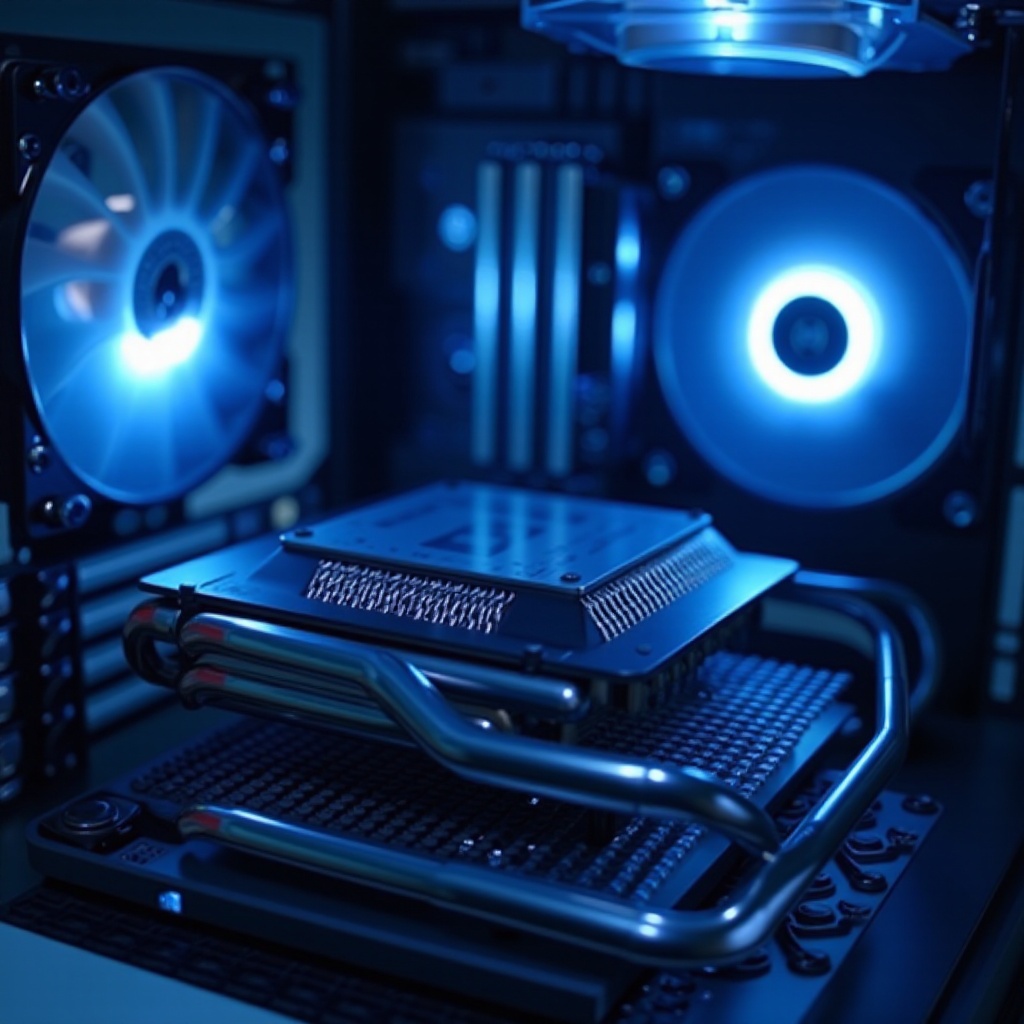Introduction
Your computer’s CPU is the core processor, managing all computational activities necessary for seamless performance. This crucial component can emit significant heat energy; if uncontrolled, the excess heat can impair your system’s efficiency and potentially harm hardware components. Monitoring the CPU’s temperature is crucial whether you’re a dedicated gamer, a professional using demanding applications, or a casual user. Thus, this guide aims to enlighten you on the importance of CPU temperature monitoring and how you can execute this task effectively.

Understanding CPU Temperature
Grasping the concept of CPU temperature is the first step in safeguarding your system. Essentially, it reflects the heat generated by the CPU during its operations. Manufacturers like Intel and AMD design CPUs to perform optimally within a temperature span of 40°C to 70°C. Occasionally, these processors can tolerate short spurts of elevated temperatures, going as high as 85°C to 100°C under heavy load. However, sustained high temperatures can be detrimental. Understanding these thresholds allows users to anticipate potential overheating and devise strategies for smooth CPU functionality. By maintaining appropriate temperature levels, you can avert performance downgrades and hardware damage.
Why Monitoring Your CPU Temperature is Essential
Monitoring your CPU’s temperature helps in preventing not just thermal throttling but also in extending your hardware’s lifespan. Overheating can compel a CPU to decelerate its operations, hindering performance. In grave situations, the heat could compromise the CPU or other components, incurring costly repairs or replacements. Additionally, consistent monitoring aids in detecting early signs of cooling system failures. By tracking temperature trends, users can optimize workloads, implement timely cleaning routines, and adjusts cooling systems to maintain a stable computing environment. Ensuring your setup remains in prime condition continually enhances performance and durability.
Methods to Monitor CPU Temperature
To effectively monitor your CPU’s temperature, various techniques are at your disposal, each suited to differing user needs and expertise levels.
Built-in System Tools
Modern computing devices generally feature built-in tools accessible via BIOS or UEFI settings during system startup. These utilities offer real-time data on temperatures, fan speeds, and other relevant metrics. They serve as dependable resources for basic monitoring without involving external software. For those seeking a straightforward setup, these built-in solutions are invaluable.
Third-Party Software Options
For detailed insights and user-friendly operation, diverse third-party software solutions exist. Software like Core Temp, HWMonitor, and SpeedFan provide centralized platforms for real-time data analysis and historical temperature logs. Besides real-time feedback, these applications often enable customizable temperature alerts, allowing timely intervention to mitigate possible hardware risks.
Hardware Solutions for Temperature Monitoring
For individuals preferring direct interactions, hardware-based solutions such as sensors and display units are available. These instruments, installed within your computer case, offer precise temperature readings directly from the source. Although this setup entails complexity, its primary advantage is independence from computer software systems, ensuring highly accurate readings.

Step-by-Step Guide to Using CPU Monitoring Tools
After selecting the appropriate monitoring approach, it’s crucial to leverage your tools optimally.
How to Use BIOS/UEFI for Temperature Checking
- Restart your computer.
- As the system boots, prompt BIOS/UEFI access by pressing the designated key (usually F2, Delete, or ESC).
- Explore the hardware monitoring sections to review CPU temperature details.
Setting Up Third-Party Software
- Download your preferred software from a trusted source.
- Execute the installation and initiate the program.
- Follow the inbuilt guidelines to explore real-time temperature progressions.
Configuring Alerts and Notifications
- In the software, navigate to temperature alert configurations.
- Define threshold temperatures to trigger warnings.
- Authorize notifications to acquire alerts during high-temperature episodes.
Reducing and Maintaining Optimal CPU Temperature
Maintaining your CPU at optimal temperatures is key for both its performance and longevity. Here are some strategies:
Effective Cooling Techniques
- Invest in robust cooling systems like air or liquid coolers.
- Verify that your computer case allows for efficient airflow.
Regular Cleaning and Maintenance
- Frequently remove dust from fans and ventilation openings.
- Renew thermal paste routinely for improved heat conduction.
Conclusion
Monitoring your CPU’s temperature constitutes a crucial yet straightforward task for sustaining your computer’s health. Understanding standard operation temperatures alongside proficient monitoring strategies ensures system stability and efficacy. By proactively observing your system’s thermal conditions, anticipate and preempt potential issues, boosting both performance and lifespan.

Frequently Asked Questions
What is a safe temperature range for my CPU?
Generally, a safe range is between 40°C and 70°C. Avoid letting the temperature stay above 85°C for extended periods.
Can monitoring my CPU temperature improve performance?
Yes, by preventing overheating, you avoid thermal throttling, thus maintaining optimal CPU performance.
How often should I check my CPU temperature?
Check regularly during intensive workload periods or if unusual performance issues arise to prevent overheating issues.

